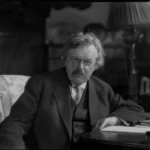A review of Monogamy: The Best Defence Against AIDS. By Michelle Nailon.
Catholic Women’s League of Victoria and Wagga Wagga,1993.
Book reviewers occasionally face the dilemma of having to review a publication that is in all respects excellent – except one. And when that one aspect happens to be a major aspect, it is a real dilemma indeed. Unfortunately, this book is one of those.
Let me start by saying that as a defence of the traditional family, marriage, and monogamy, this is a very good book. Although brief (28 pages – designed for use in the classroom), most of the important issues dealing with marriage and the family are covered.
The book provides a sociological, economic, philosophical and theological argument for marriage and the family. It makes clear that although marriage and monogamous relationships are not exactly favourites of popular culture, they still remain the best form of social cohesion and the best means of raising children.
Moreover, they remain the best defense against AIDS. Given a culture obsessed with personal self-gratification and everything sexual, a call for marriage and monogamy is especially important. As a classroom device, which features helpful question and activity pages, this is a very good vehicle for spreading the message of marriage and the family.
What then is the omission which mars an otherwise good book? It is this: nowhere in the book is the word homosexuality mentioned. More critically, in the section entitled, “How HIV is Spread”, not one word is mentioned of homosexual behaviour as the major means of transmitting the AIDS virus. All that is said is that “HIV has been shown to be spread by sexual intercourse, both anal and vaginal, exposure to infected blood or blood products and from infected mothers to their babies.”
That is all true, but it is also misleading, given the overwhelming preponderance of homosexual activity in the transmission of AIDS. To talk about the spread of AIDS without mentioning homosexuality is a bit like talking about the causes of lung cancer without mentioning smoking. Government figures show that 91 per cent of people diagnosed with HIV infection were male, the overwhelming majority of whom acquired it through homosexual/ bisexual contact. In the United States, according to AIDS expert Michael Fumento in his important book, The Myth of Heterosexual AIDS, non-intravenous, non-drug-abusing heterosexuals comprise 95.5 per cent of the population, and only 6 per cent of all AIDS cases.
But the Australian government, like most Western governments, has long ago surrendered to the homosexual lobby. It runs commercials telling us that AIDS does not discriminate, and that everyone is at risk. Yet certain behaviours, mainly homosexual intercourse and intravenous drug use, are much more likely to spread the AIDS virus than others.
The virus does not discriminate, but those who are infected with it do. No wonder AIDS was first called GRID, Gay-Related Immune Deficiency. Avoid certain behaviours and you will be much more likely to avoid the disease that goes with those behaviours.
Now this booklet certainly does make clear that if two people uninfected by the virus maintain a monogamous relationship, they have zero chance of contacting the disease (bar by contaminated blood transfusion). The booklet thus recognises that behaviours do play a real determining factor as to the likelihood of contracting AIDS. But it seems that young people should have a very clear idea as to which behaviours are most at risk. By simply saying sexual activity, without highlighting the fact that homosexual activity is the real culprit, the message given is at best misleading.
Now the curious observer would be asking, “why this very major omission?” Given that the book was funded by the Federal Government through a National AIDS Education Program Grant, one could readily come up with an answer.
The author however assures me that this body put no pressure on her whatsoever, and the omission was the deliberate decision of herself alone. There is no reason to question this, so one can only hope that if a second edition of this book appears, this oversight will be corrected. If corrected, it could be promoted without reservation, but as it now stands, it can only rate two and a half cheers.
[682 words]



















